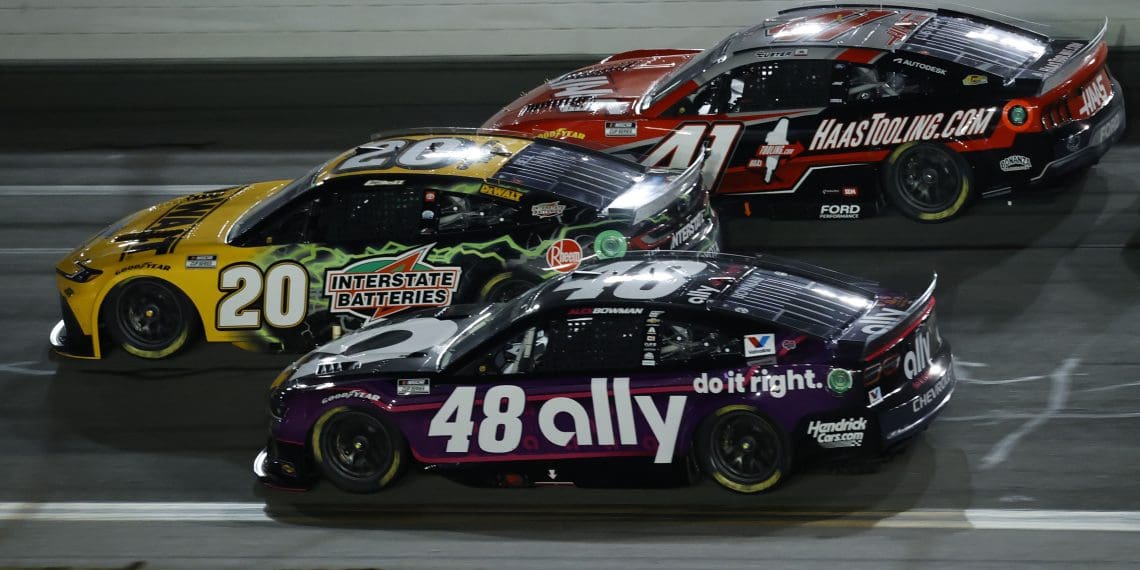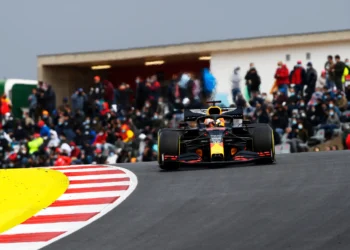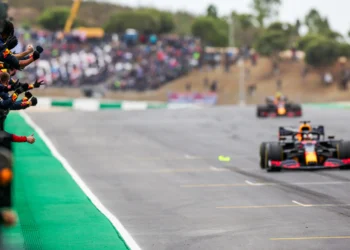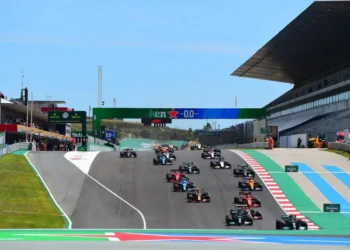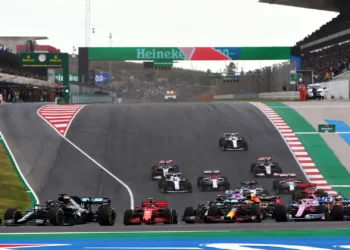Last Sunday, Christopher Bell’s dominating performance at Atlanta Motor Speedway, where he led all but one lap to secure the win, sparked a wave of celebration within the No. 20 Joe Gibbs Racing (JGR) team. Bell’s victory was reminiscent of William Byron’s lucky break on the final lap of the Daytona 500, with both drivers unyielding in their pursuit of the checkered flag.
However, a parallel drawn between Atlanta and Daytona does more than just highlight the drivers’ tenacity. Adam Stevens, crew chief of the #20 JGR team and key strategist behind Bell’s recent triumph, used the comparison to critique the state of racing at Daytona.
The Atlanta track, he argued, offered a superior racing experience, outshining the high banks of Daytona. Despite their similar car package configurations, the 1.5-mile quad oval track in Atlanta handed more control to the drivers and teams, allowing them to shape their own destiny.
Stevens and his team seized this opportunity during the last moments of the race, demonstrating Atlanta’s capacity for high-thrill finishes. This echoes last season when fans were treated to a nail-biting, three-wide finish with Daniel Saurez edging out Ryan Blaney by a mere 0.003 seconds.
Ever since the track’s repave, Stevens claims, it has only improved, offering increasingly exciting races. He urged NASCAR to take note and use Atlanta as an example to enhance the superspeedway races at Daytona and Talladega.
Stevens minced no words when critiquing Daytona, describing it as “everybody’s running around like a bunch of buffoons.” His criticism, supported by the likes of Dale Earnhardt Jr., reflects a growing consensus on the current issues plaguing Daytona.
Stevens pointed out the structural problem of the race format, where the run lengths exceed the fuel window. This forces teams to prioritize fuel conservation over actual racing, resulting in the spectacle of NASCAR’s best drivers intentionally holding back, not racing to their maximum capacity.
In contrast, the Atlanta track, despite being nearly a mile smaller than Daytona, encourages real racing by eliminating the need for fuel-saving strategies that hinder Daytona’s races.
Stevens’ frustration with Daytona is shared by many NASCAR fans who are eager for a better racing experience. The sight of drivers merely floating around in the draft at half throttle, only to end up in scraps during a “Big One,” is not the vision NASCAR intends for its superspeedway races.
Prominent figures within NASCAR, like Denny Hamlin and Dale Jr., have offered solutions to improve speedway racing. Joining them, Stevens proposed a simple yet logical solution: adjust the run length to match the fuel cell, eliminating the need for conservation and promoting constant competition.
Stevens believes the successful redesign of Atlanta demonstrates the potential for Daytona’s improvement. He lauds Atlanta for fostering authentic racing without favoring manufacturers or encouraging pack-style races.
As NASCAR plans for future seasons, it may be time to admit that even its most iconic tracks need significant format changes to meet the high standards of competitors and fans. Adam Stevens’ outspoken criticism could be the catalyst for the much-needed transformation of superspeedway racing.

